Shenandoah National Park: A First Time Visitor Guide
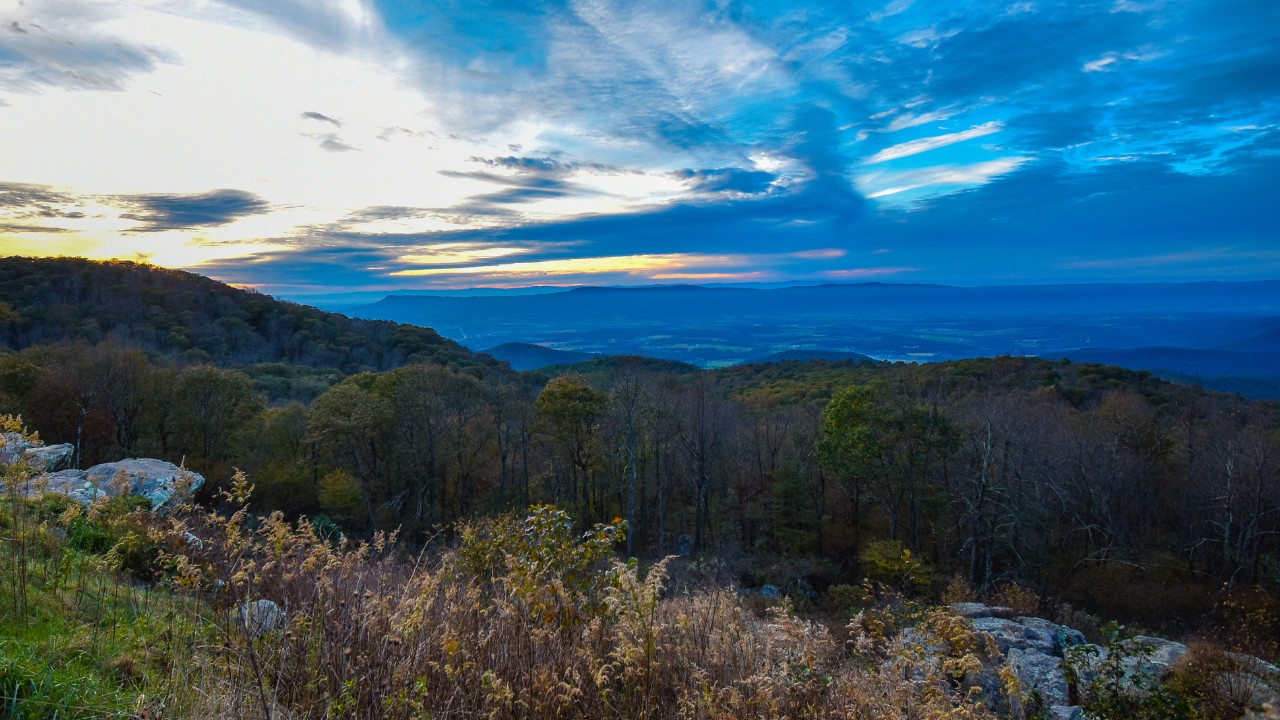
Shenandoah National Park is an incredible place in Virginia known for its scenic vistas, diverse wildlife, and lush forests. With over 200,000 acres of protected wilderness, the park offers a rich array of activities and natural beauty year-round. From the stunning Skyline Drive to picturesque hiking trails, Shenandoah is a perfect destination for nature lovers, families, and adventure seekers alike. Here’s a comprehensive guide to help you make the most of your first visit to Shenandoah National Park!
Basic info:
- Name: Shenandoah National Park
- Location: Virginia
- Fee: $30 for private vehicles
Getting There:
Shenandoah National Park is accessible from several major cities and has multiple entrances along its famed Skyline Drive. Here are all the details you need to know to get there:
Closest Airports:
-
- Washington Dulles International Airport (IAD): About 1.5 hours from the park, Dulles is the closest major airport, offering a quick drive into the northern section of the park.
- Charlottesville-Albemarle Airport (CHO): Located about 30 minutes from the park’s southern entrance, this airport is ideal for visitors entering near Rockfish Gap.
Main Entrances:
-
- Front Royal Entrance Station (North): Located near the town of Front Royal, this entrance is ideal for starting a journey along Skyline Drive.
- Thornton Gap Entrance Station (Central): Near the town of Luray, this entrance is convenient for visitors coming from central Virginia or those heading to popular sites like Marys Rock.
- Swift Run Gap Entrance Station (South-Central): Accessible from Route 33, this entrance is convenient for visitors from Harrisonburg.
- Rockfish Gap Entrance Station (South): Near the town of Waynesboro, this entrance is close to the Blue Ridge Parkway, making it easy for visitors to continue along the scenic route.
Photos:
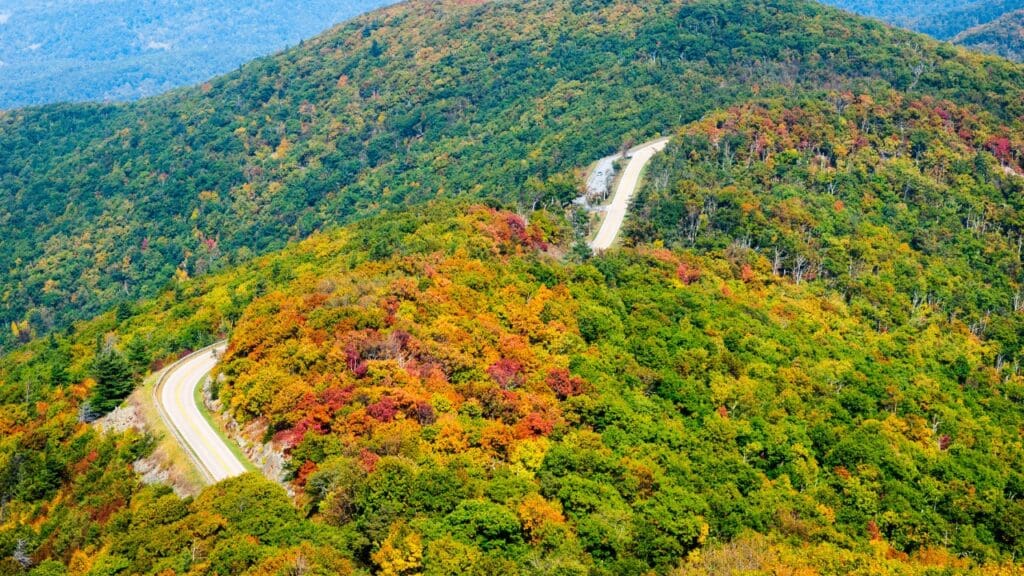
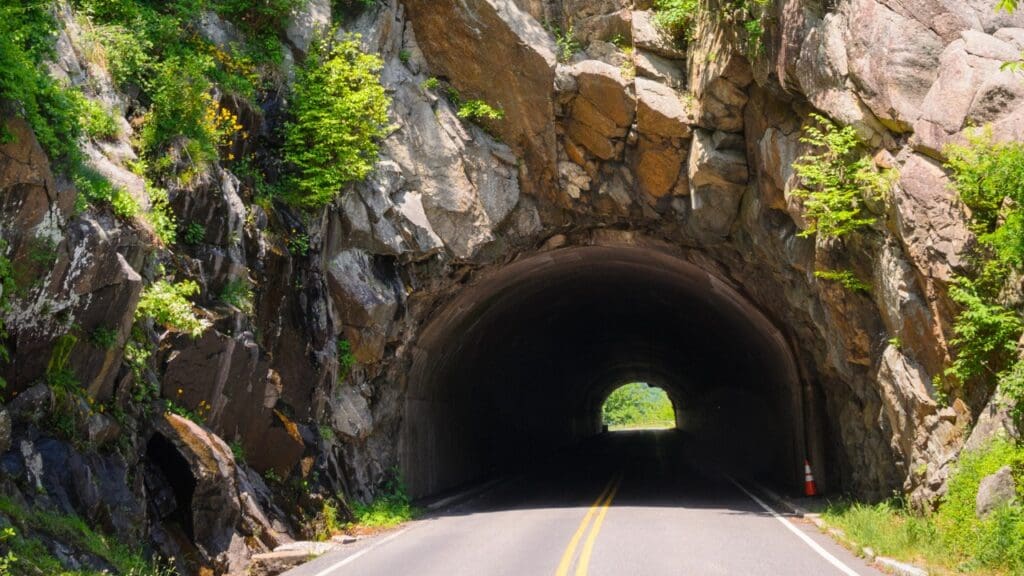
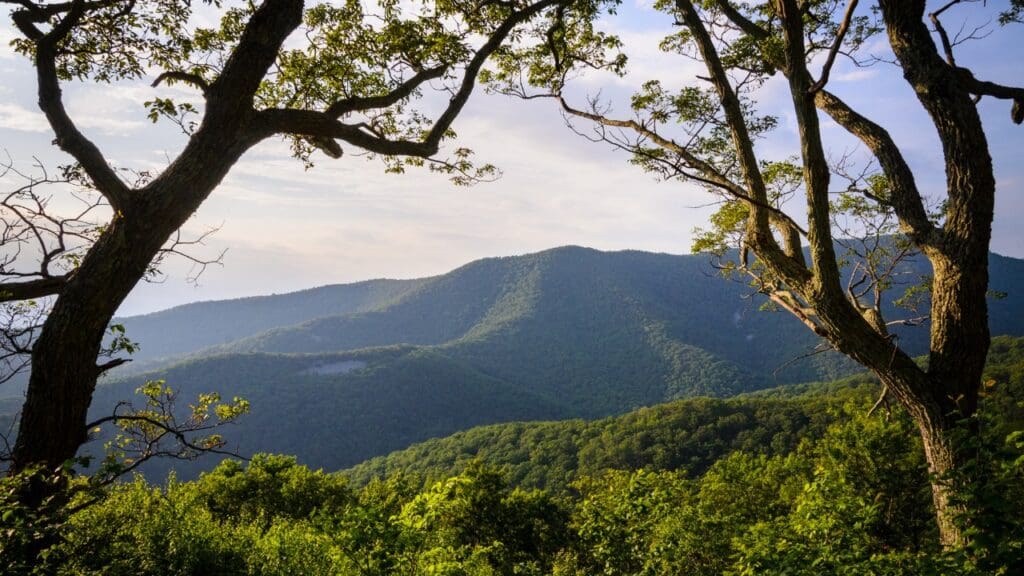
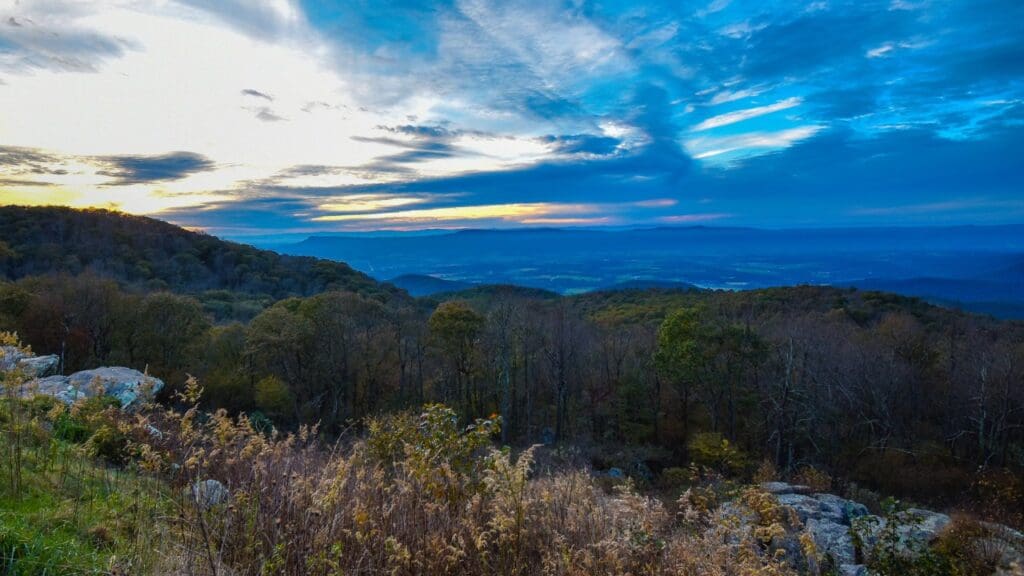
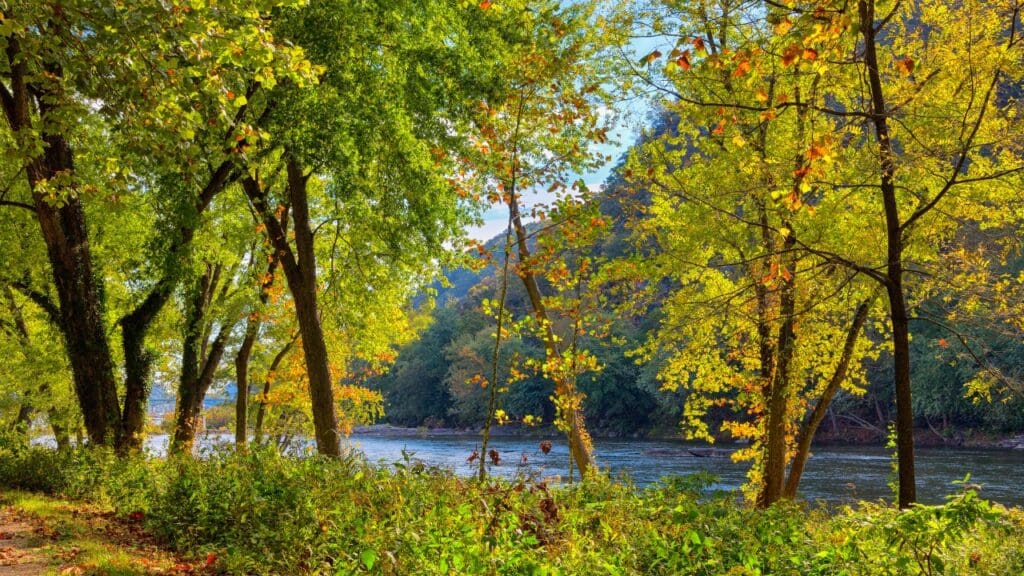
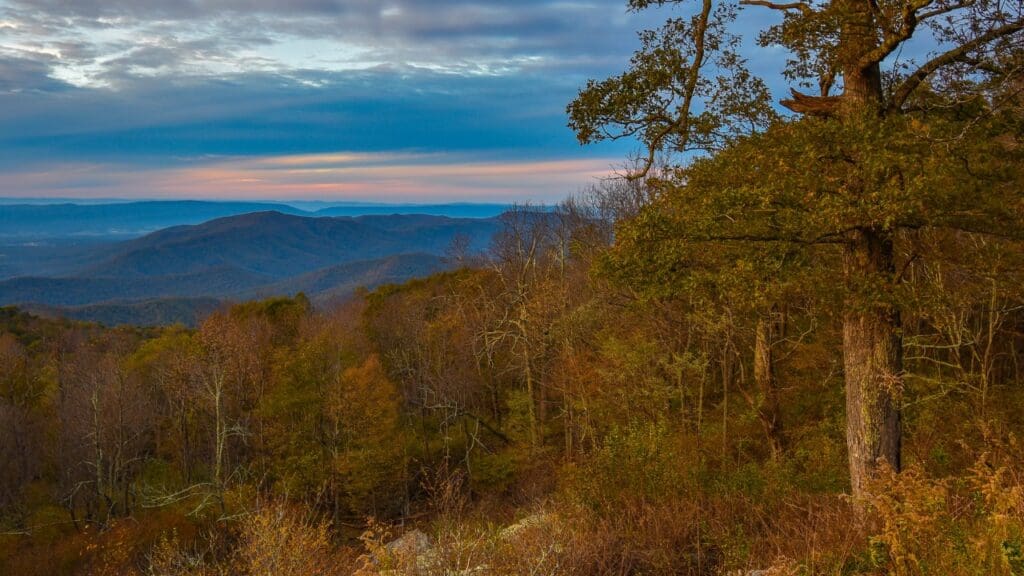
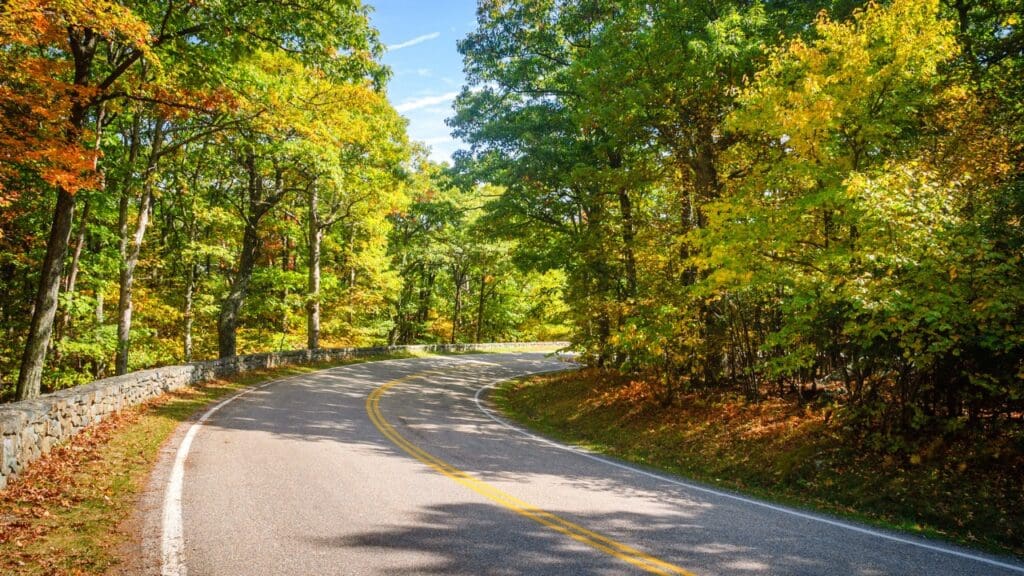
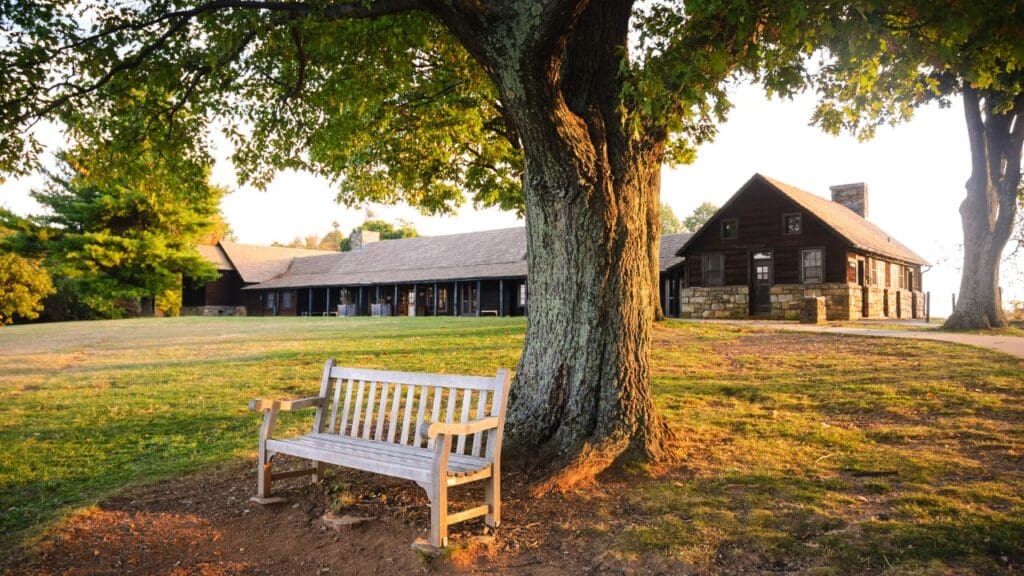
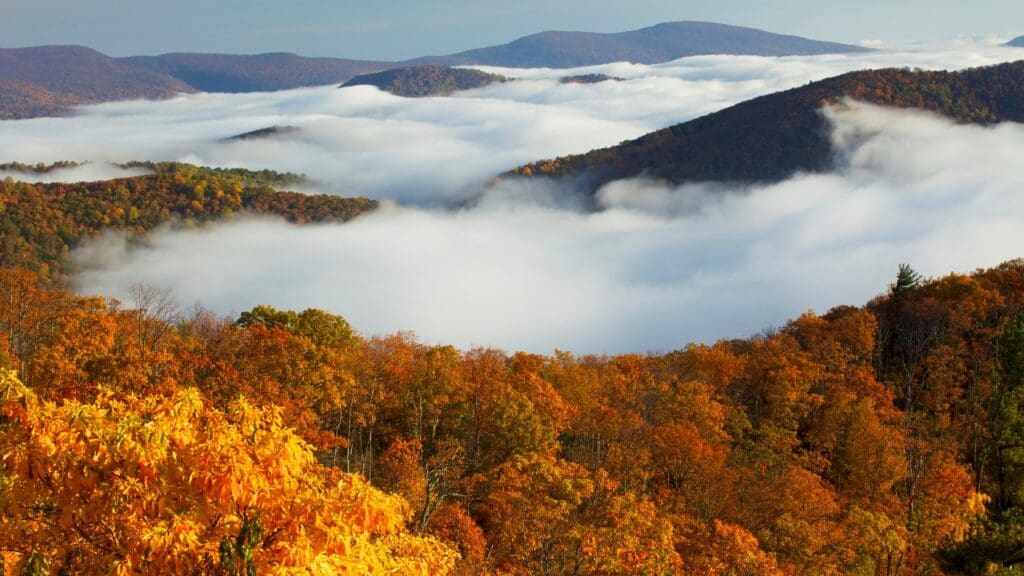
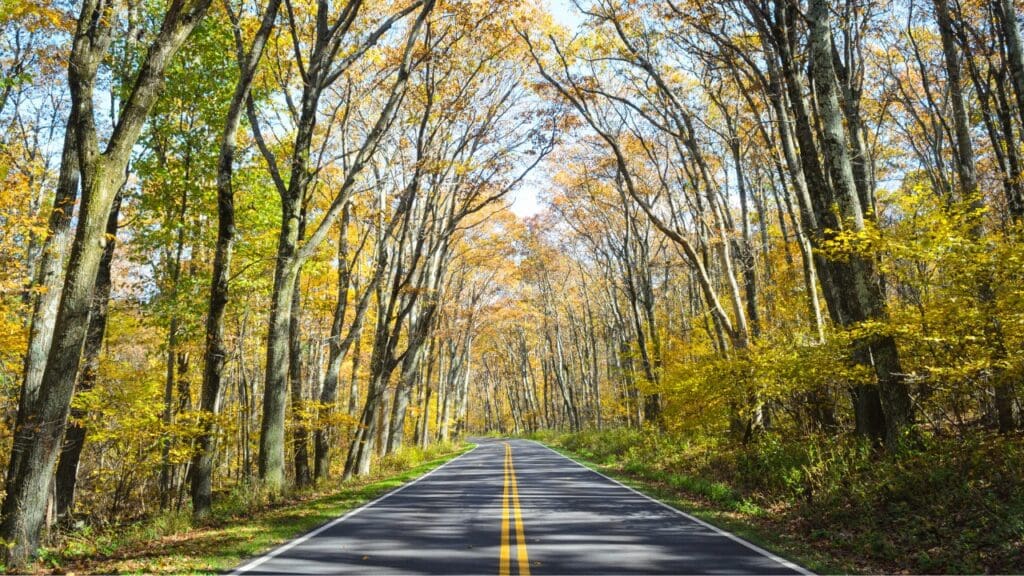
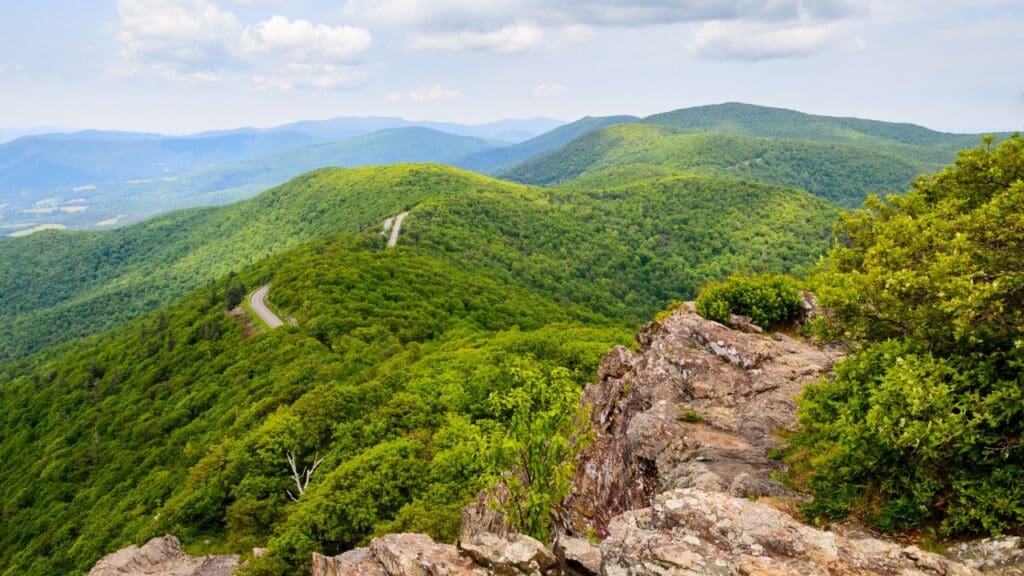
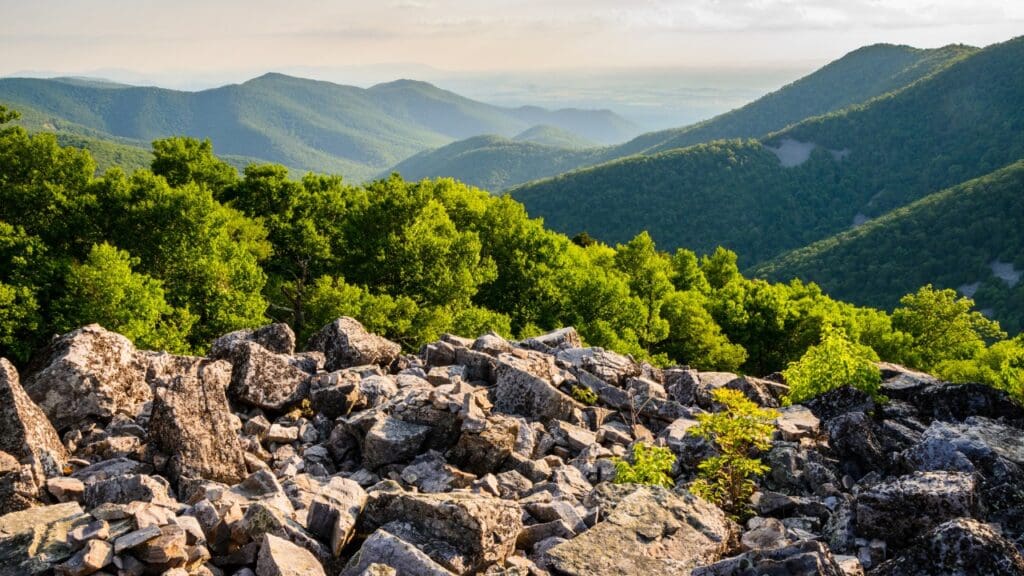
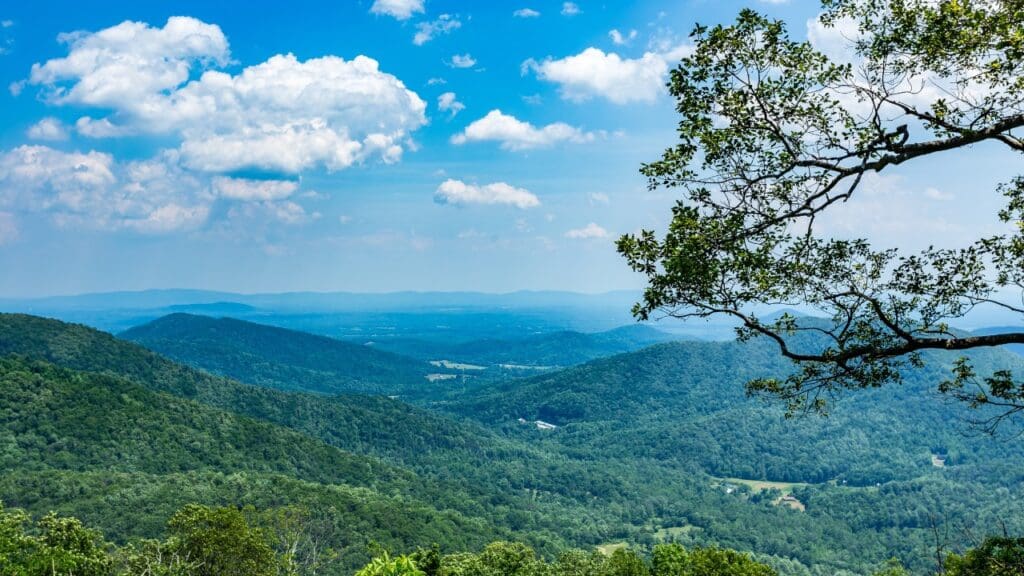
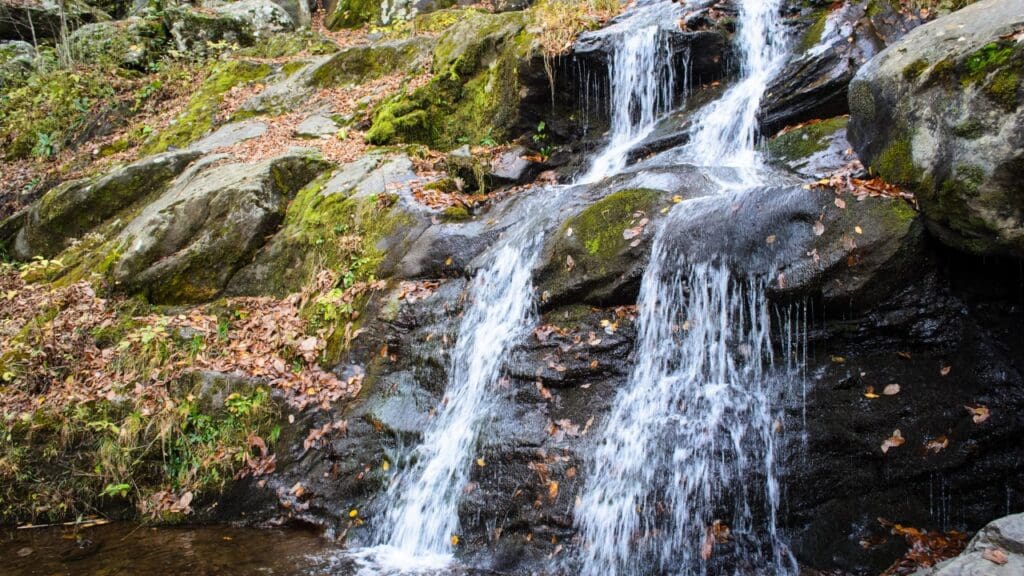
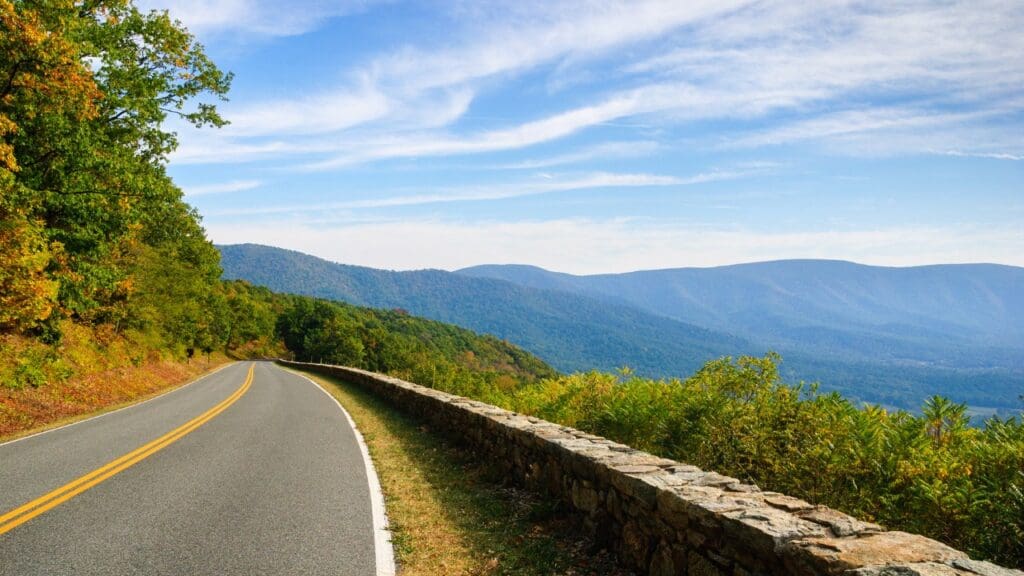
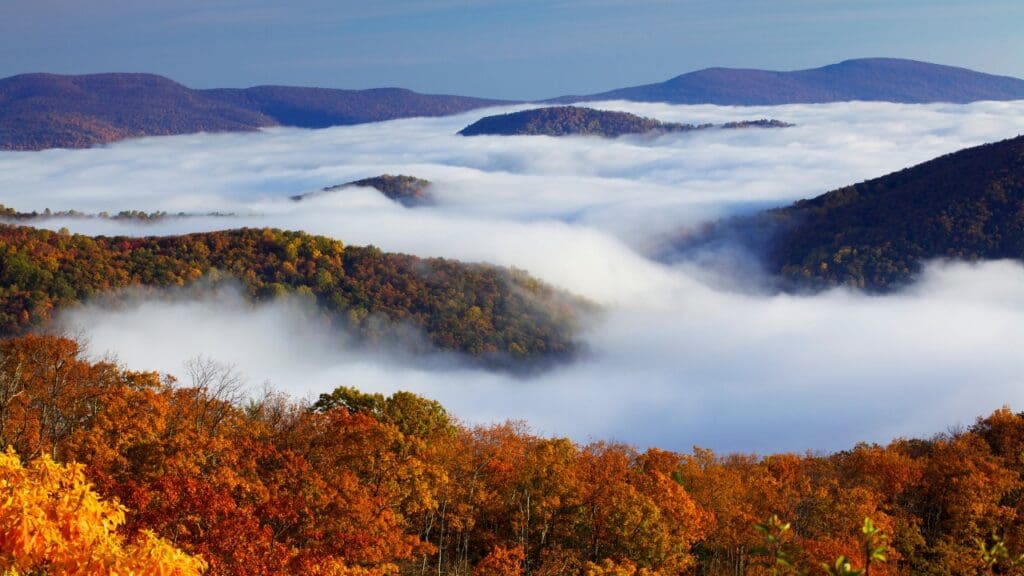
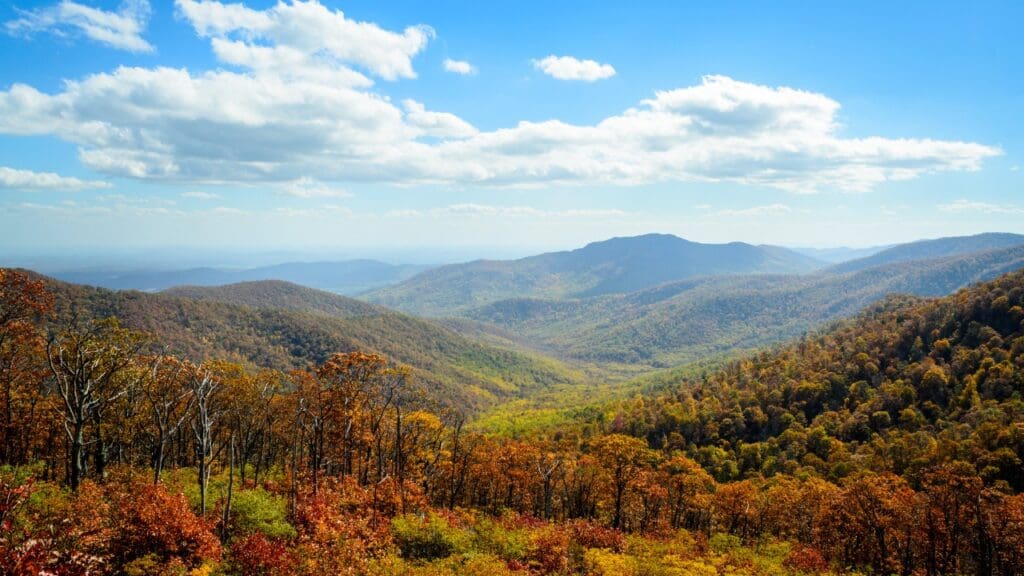
Best Times to Visit:
You can visit Shenandoah National Park year round but each season has it’s own unique pros and cons. Here’s a breakdown of each one:
- Spring (March to May): Spring is a beautiful time to visit, with wildflowers blooming and temperatures ranging from 50°F to 70°F (10°C to 21°C). This season is ideal for hiking and scenic drives, though bring layers as mornings and evenings can be cool.
- Summer (June to August): Summer brings warmer temperatures from 70°F to 85°F (21°C to 29°C), making it perfect for outdoor activities, including hiking and camping. While the park is busiest in summer, early mornings and evenings are often quieter.
- Fall (September to November): Fall is peak season due to the vibrant autumn foliage, with temperatures from 50°F to 70°F. Late September through October is the best time for fall colors, especially along Skyline Drive. Crowds are heavier, so plan to arrive early to secure parking at popular viewpoints.
- Winter (December to February): Winter offers a quieter experience with temperatures ranging from 20°F to 40°F (-6°C to 4°C). While some areas may be closed due to snow, the park’s winter landscape is stunning. Hiking and scenic drives are possible, but dress warmly and check weather updates.
Skyline Drive:
Shenandoah National Park has 1 main scenic drives known as the Skyline Drive that runs a long 105 miles from north to south. It offers access to trailheads, overlooks, and visitor centers. Here’s some notable overlooks to check out along the drive:
-
- Stony Man Overlook (Mile 41.7): Offers expansive views of the Shenandoah Valley and Massanutten Mountain.
- Thornton Hollow Overlook (Mile 27.6): A popular spot for sunrise, with views of rolling hills and the valley below.
- Jewell Hollow Overlook (Mile 36.4): Provides views of the Page Valley and Massanutten Mountain.
Hiking Trails:
Shenandoah National Park is known for its diverse trails, which vary in difficulty and length. Here are some (but not all) must-do hikes for first-time visitors:
- Stony Man Trail: A 1.6 mile round-trip (easy). This short loop trail offers spectacular views from the summit of Stony Man Mountain, making it a popular choice for beginners and families.
- Old Rag Mountain: A strenuous 9 mile round trip (2,600+ elevation gain). This is one of the park’s most famous hikes. Old Rag Mountain involves rock scrambling and a challenging climb but rewards hikers with incredible 360-degree views at the summit. Permits are required for this trail, so plan ahead!
- Dark Hollow Falls Trail: A moderate 1.4 mile round-trip. This trail leads to Dark Hollow Falls, one of the park’s most scenic waterfalls. The trail is short but steep in places, so wear sturdy shoes.
- Hawksbill Mountain: A 2.2 miles round-trip (moderate). Hawksbill is the highest peak in Shenandoah National Park, offering sweeping views of the Shenandoah Valley and surrounding mountains.
- Whiteoak Canyon Trail: A moderate 4.6 miles round-trip to Upper Falls. This trail is known for its series of waterfalls, with six scenic falls along the route. The trail can be extended for a longer hike to Lower Falls.
- More Shendandoah hikes.
Gear recommendations:
- Best rated hiking shoes for day hikes (men/women sizes available)
- Best rated hiking backpack for day hikes
- Best rated hiking pole for day hikes
Visitor Centers and Resources:
Shenandoah has several visitor centers where you can learn about the park, pick up maps, and get updates on trail conditions.
- Dickey Ridge Visitor Center (Mile 4.6): Located near the Front Royal Entrance, this center has exhibits, a movie about the park, and rangers available to answer questions.
- Byrd Visitor Center (Mile 51): Located near Big Meadows, the Byrd Visitor Center offers exhibits on the history, culture, and wildlife of Shenandoah, as well as an informational video.
- Ranger Programs: Both visitor centers offer ranger-led programs and guided hikes, which are a great way to learn about the park’s flora, fauna, and history.
Camping:
Shenandoah has four main campgrounds, offering options for both tent and RV camping. Each campground has restrooms, fire rings, and picnic tables, though showers and electric hookups are not available.
- Big Meadows Campground (Mile 51.2): Located in the heart of the park near popular trails and scenic overlooks. Reservations are highly recommended, especially during peak season.
- Loft Mountain Campground (Mile 79.5): The park’s largest campground, with beautiful views of the Blue Ridge Mountains and access to nearby trails.
- Lewis Mountain Campground (Mile 57.5): A smaller, quieter campground, ideal for families or those looking for a peaceful camping experience.
- Mathews Arm Campground (Mile 22.1): Located near the park’s north end, it’s convenient for visitors entering through the Front Royal Entrance.
Tips for First Time Visitors:
- Check Weather and Trail Conditions: Weather in the mountains can change quickly, so check forecasts and trail conditions at the visitor center or online.
- Bring Layers: Temperatures can vary significantly in the park, especially at higher elevations. Dressing in layers allows you to adjust to the changing weather.
- Wildlife Safety: While black bears are generally shy, it’s important to keep a safe distance and store food securely. If you encounter wildlife, maintain at least a 50-yard distance and never feed animals.
- Cell Service: Cell service is very limited in the park, so download maps or bring a physical map. The Shenandoah National Park app can also be useful for offline information.
Lodging:
See top lodging options near Shenandoah
Nearby Attractions:
If you have extra time, consider visiting some nearby attractions:
- Luray Caverns: Just a short drive from the park, these caverns offer spectacular rock formations and an underground lake.
- Blue Ridge Parkway: Continue your journey along the Blue Ridge Parkway, which connects with the park’s southern entrance at Rockfish Gap and offers more scenic views and attractions.
- Skyland Resort and Big Meadows Lodge: These historic lodges, located within the park, offer dining, shopping, and accommodations with stunning views of the Blue Ridge Mountains.
Final Things to Know:
Shenandoah National Park offers a wonderful combination of scenic drives, hiking trails, and camping experiences for all ages and fitness levels. From exploring the lush forests and breathtaking viewpoints along Skyline Drive to hiking some of the park’s most scenic trails, it is one of the most vast east coast national parks you can explore.
Related:
